Cisco CCNP SWITCH HSRP vs. VRRP
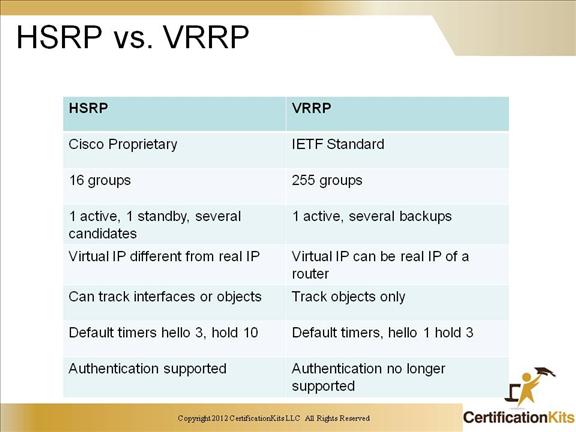
HSRP was a predecessor to VRRP. HSRP is a Cisco proprietary protocol from which the IETF Standard VRRP was created. Both HSRP and VRRP perform a similar function.
Cisco CCNP SWITCH VRRP
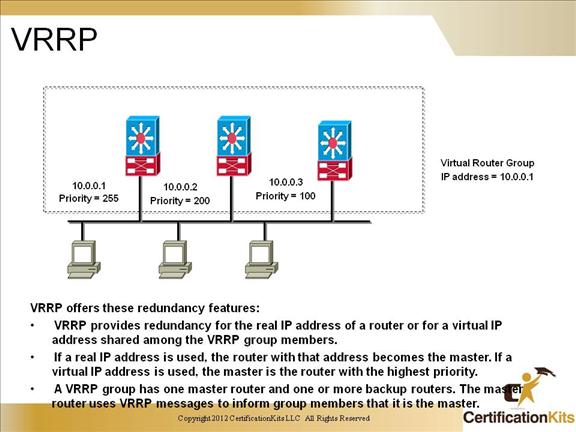
Like HSRP, VRRP allows a group of routers to form a single virtual router. In an HSRP or VRRP group, one router is elected to handle all requests sent to the virtual IP address. With HSRP, this is the active router. An HSRP group has one active router, at least one standby router, and perhaps many listening routers. A VRRP group has one master router and one or more backup routers.
The LAN workstations are then configured with the address of the virtual router as their default gateway. VRRP differs from HSRP in these ways:
– VRRP is an IEEE standard (RFC 2338) for router redundancy; HSRP is a Cisco Systems proprietary protocol.
– The virtual router, representing a group of routers, is known as a VRRP group.
– The active router is referred to as the master virtual router.
– The master virtual router may have the same IP address as the virtual router group.
– Multiple routers can function as backup routers.
– VRRP is supported on Ethernet, Fast Ethernet, and Gigabit Ethernet interfaces, and on Multiprotocol Label Switching (MPLS) virtual private networks (VPNs) and VLANs.
In the example, routers A, B, and C are members of a VRRP group. The IP address of the virtual router is the same as that of the LAN interface of router A (10.0.0.1). Router A is responsible for forwarding packets sent to this IP address.
Cisco CCNP SWITCH Configuring VRRP
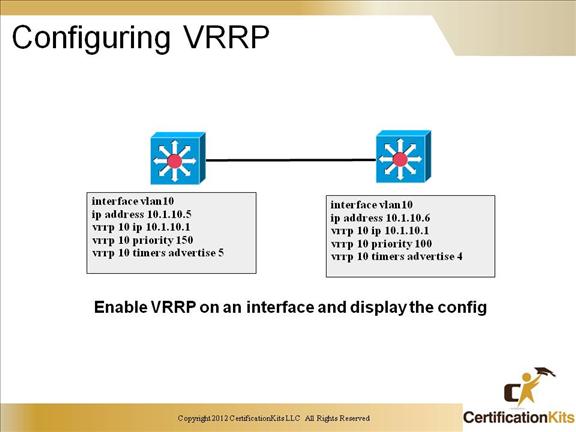
VRRP is configured very similar to HSRP. The main difference is that instead of standby commands that are used with HSRP, vrrp commands are used. Similar parameters are utilized.
Cisco CCNP SWITCH Gateway Load Balancing Protocol
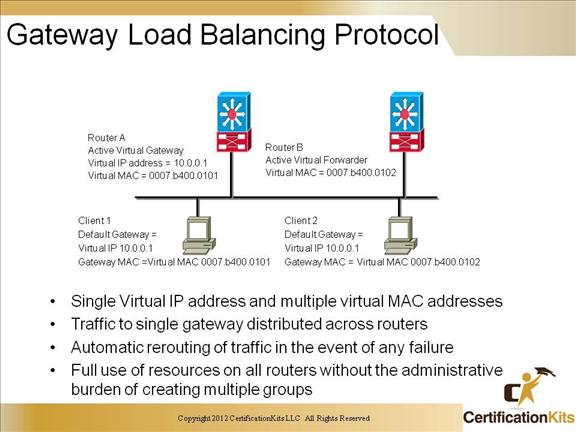
Although HSRP and VRRP provide gateway resiliency, for the standby members of the redundancy group, the upstream bandwidth is not used while the device is in standby mode.
Only the active router for HSRP and VRRP groups forwards traffic for the virtual MAC. Resources associated with the standby router are not fully utilized. Some load balancing can be accomplished with these protocols through the creation of multiple groups and through the assignment of multiple default gateways, but this configuration creates an administrative burden.
Cisco designed GLBP to allow automatic selection and simultaneous use of multiple available gateways in addition to automatic failover between those gateways. Multiple routers share the
load of frames that, from a client perspective, are sent to a single default gateway address.
With GLBP, resources can be fully utilized without the administrative burden of configuring multiple groups and managing multiple default gateway configurations, as is required with HSRP and VRRP.
Cisco CCNP SWITCH Configuring GLBP
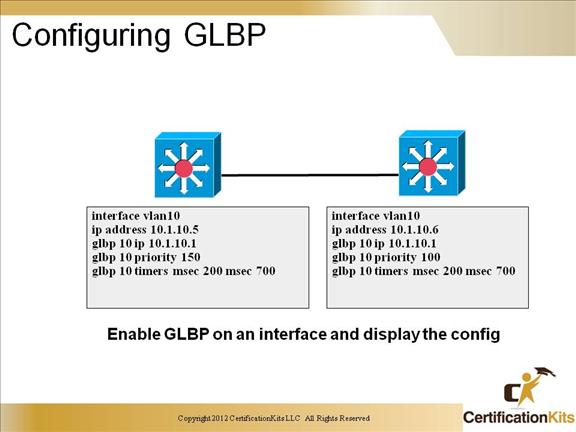
GLBP is configured similar to HSRP and VRRP. The main difference is that instead of standby commands that are used with HSRP or vrrp commands that are used with VRRP, glbp commands are used. Similar parameters are utilized.
